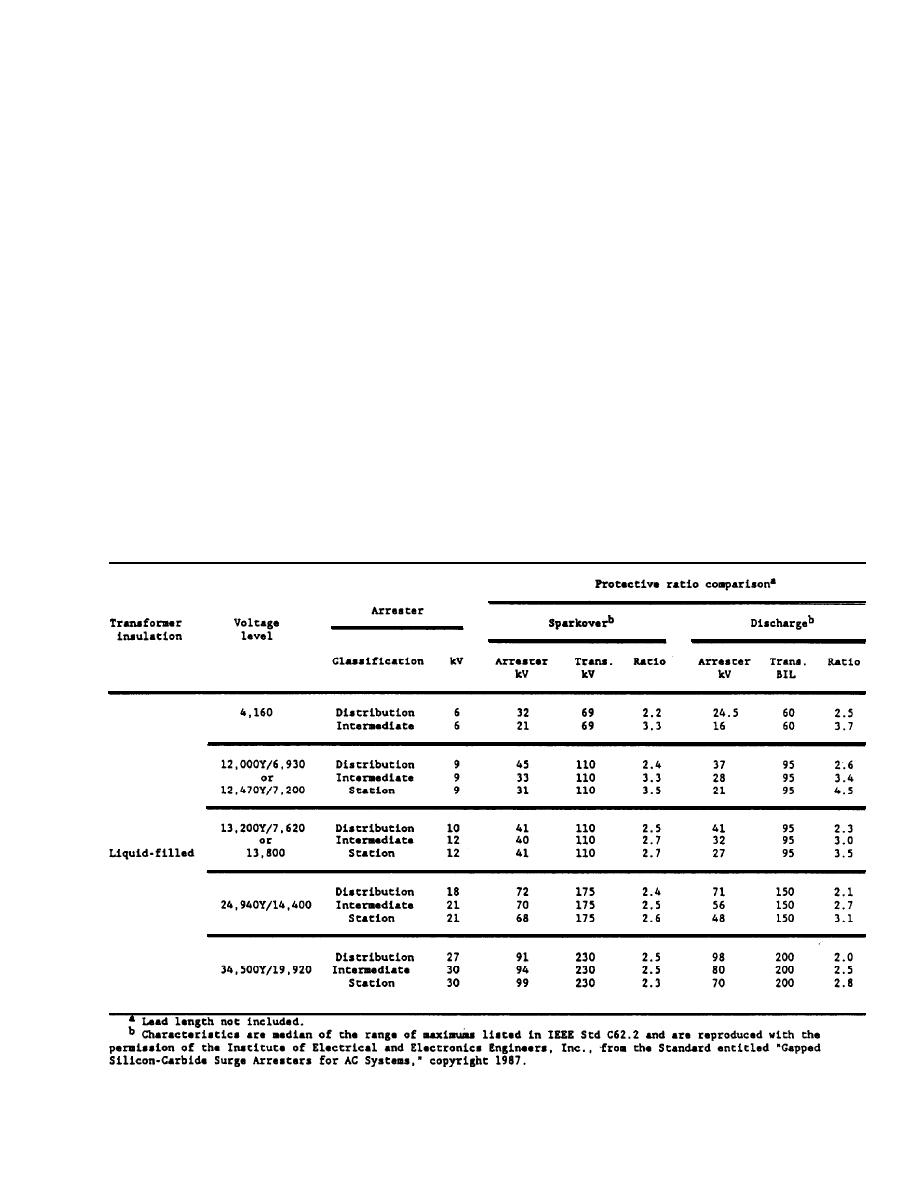
TM
5-811-1/AFJMAN
32-1080
rating, must be provided. For ungrounded and
monly used as a basis for insulation coordination
high-resistance grounded systems, ratings must
on a medium-voltage distribution system.
equal or exceed the phase-to-phase system voltage
(1) Distribution class. Distribution arresters,
dependent upon the size of the maximum ground
with the lowest protective margins for voltage
fault that could occur.
systems above 1,000 V will be used as an economi-
(6) Lead length. Lead length is the length of
cal way of providing lightning surge protection for
line connecting the line terminal of an arrester to
distribution equipment. Aerial to underground ris-
the energized line (line lead) plus the length of the
ers require surge protection, as do transformers,
line (ground lead) connecting the ground terminal
capacitors, and regulators mounted on poles.
of an arrester to a common ground. On riser poles
(2) Station class. Station arresters are capable
the common ground is the conducting shield or
of discharging the most surge energy and, there-
sheath of cable at the cable termination. Leads
fore, will be used at main electric supply stations
will be kept as short as practicable, since voltage
for protection of incoming aerial lines and where
drops of both leads must be added to the sparkover
needed for protection of equipment not within the
and discharge voltages of the arrester when figur-
protective radius of an incoming line arrester such
ing protective margins. A commonly used figure
as transformers and regulators.
for lead voltage drop is 2 kV per foot of length.
(3) Intermediate class. Intermediate class ar-
c. Classification. Arrester classification is based
resters have protective characteristics and costs
on specified test requirements. Of the six classifi-
somewhere between those of station class and
cations available, only the four arrester types
distribution class types. Intermediate arresters
which are designated as station, intermediate,
will be used to protect pole-mounted transformers
distribution, and secondary have suitable operat-
and aerial-to-underground risers at munitions ar-
ing characteristics. Table 9-1 indicates protective
eas. Elsewhere, when such units are proposed as a
margins for liquid-filled transformers of various
substitute for other classifications, their use will
primary voltages. The discharge values are for a
be justified, except where such use is the installa-
10 kA impulse current crest, the current com-
tion's normal policy.
Table 9-1. Aerial-Mounted Liquid-Filled Transformer Surge Protective Margins
9-2



 Previous Page
Previous Page
